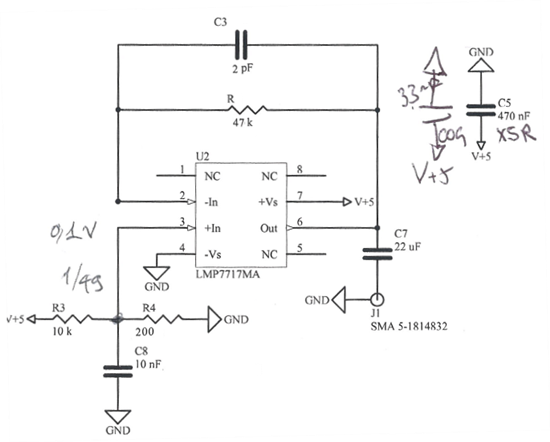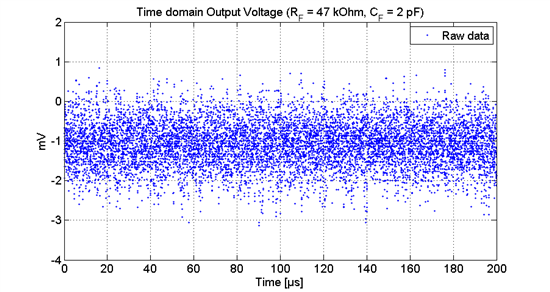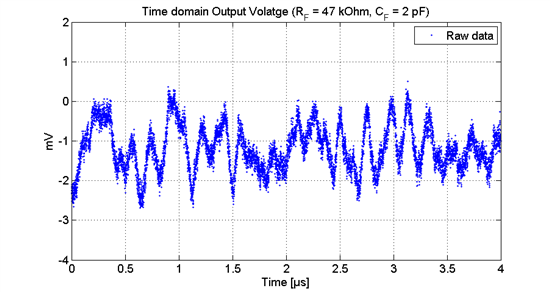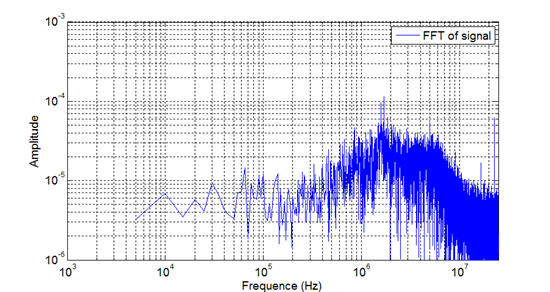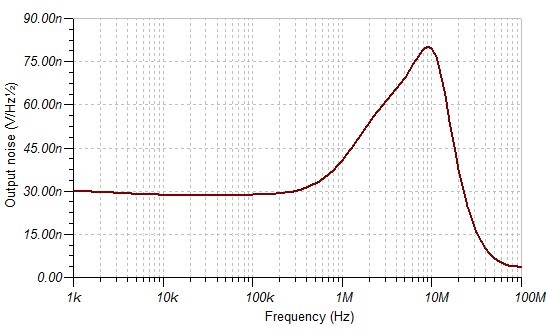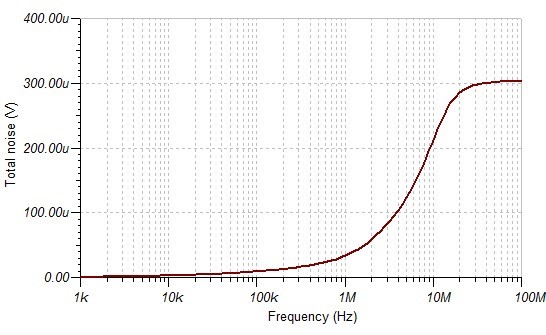Hello,
For our laser communication project, we use your LMP7717 amplifier to detect a very low current modulation (@ 1MHz) received by an avalanche photodiode (by using a transimpedance circuit in Fig. 1 below, RF and CF are chosen to have ~ 2MHz bandwidth).
Fig. 1. Transimpedance circuit using LMP7717, RF = 47 kΩ, CF = 2 pF
We have a probleme in noise level of the output voltage.
The measured noise level of this circuit is about 0.56 mVrms (for the 2 MHz bandwidth, Fig. 2 and Fig. 3). Fig. 3 shows the variations with frequency of 2 – 3 MHz in time domain.
But by using the current and voltage noise level of 0.01 pA/Hz1/2 and 5.8 nV/Hz1/2, the theoretical calculation of output voltage noise [1] gives us a noise level of 0.11 mVrms (for the 2 MHz bandwidth). This theoretical noise level is 5 times smaller than the measured noise level.
Fig. 2. Time domain Output voltage noise [200 µs, Fs = 50 MHz]
Fig. 3. Time domain Output voltage noise [4 µs, Fs = 2.5 GHz]
Fig. 4. FFT of output voltage (for the raw data in Fig. 2)
In the noise spectrum (Fig. 4, FFT of the raw data in Fig. 2), there is a bump around 2 MHz and it dominates the noise level. The bump also appears when we use RF = 100 kΩ, CF = 0.68 pF (proposed in the LMP7717 datasheet).
So, we would like to know:
- Why do we have a bump of 2 MHz in the noise spectrum?
- How to optimize the noise level of the transimpedance circuit (BW ≥ 1MHz) using LMP7717?
- Have you a testing circuit for LMP7717?
[1] - Texas Instrument, “Transimpedance considerations for High-Speed Amplifier”, Application Report, SBOA122, Nov 2009
Thank you in advance,
PHUNG Duy-Hà


